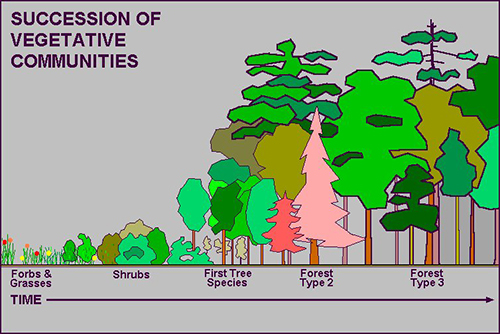Helping youth succeed in science – Part 3: Developing and using models
Successful scientists develop and use models to convey ideas.

In 2011, the National Research Council released a report, “A Framework for K-12 Science Education.” Michigan State University Extension and Michigan 4-H are working to increase science literacy through the inclusion of the Scientific and Engineering Practices described in the framework – and you can too!
The Scientific and Engineering Practices outlines eight simple but powerful practices about how to engage youth in science and engineering to increase STEM (Science, Technology, Engineering and Mathematics) literacy. The Practices are:
- Asking questions (science) and defining problems (engineering).
- Developing and using models.
- Planning and carrying out investigations.
- Analyzing and interpreting data.
- Constructing explanations and designing solutions.
- Using mathematics and computational thinking.
- Engaging in argument from evidence.
- Obtaining, evaluating and communicating information.
Models can be a useful tool to help youth understand the world around them. Models have been around since the beginning of mankind and take many forms. Models include diagrams, physical replicas, mathematical representations, analogies and computer simulations. Regardless of the type or shape of the model, the key to ensuring success with youth is how the model is used. To support success in science, models should be used to help youth explore, analyze and explain the world around them.
You can help youth select and use existing models by encouraging them to think about why they need a model. What are they planning to use the model to explain? What is the question or situation they are trying to explore or explain through the model? Youth at MSU Extension’s 4-H Forestry Fun Camp used diagrams of the forest’s vertical structure and succession to explain the holes they observed in the forest canopy and to discuss the types of plants and animals likely to be found in the forest being studied.

Model showing the forest’s succession of vegetative communities, designed by youth at the 4-H Forestry Fun Camp.
Youth used topical maps, a type of model, to help explain the movement of deer through an area. A model of a compass was used to help youth understand how a compass works and how to use one. Youth can choose to design their own models to help explain to themselves or others how the world around them functions. When helping youth design a model, ask them to clearly identify the situation they want to explain or explore. If a youth is making a drawing of a duck to help explain why ducks eat gravel, have them list the key items needed in their diagram. The beak and digestive system would be vital, but feathers could be added just for fun. Will their diagram look like a real duck? No; however, this is to be expected. No model can accurately represent everything – if it did, it would no longer be a model. It would be the real thing!
All models have limitations. You can help youth understand and identify the limitations in existing models or in their own models by discussing what the model was designed to explain and what the model does not explain. The trees in our 4-H Forestry Fun Camp model are 2-D and not realistic in the vertical structure of the forest, but the reason for the diagram, identifying the spatial dispersion within the canopy, is accurately represented. The compass model does not contain a floating magnetic needle and will not find true north, but it is an excellent tool to teach youth how to use a compass.
This is Part 3 of a series of nine articles that will explore a variety of ways you can help youth engage in Scientific and Engineering Practices. Although the series will address individual practices, it is important to remember that as a whole they increase STEM literacy and like science itself, the individual practices do not function in a vacuum, but are intertwined with STEM exploration. To learn more about the Scientific and Engineering Practices, you can download a free copy of “A Framework for K-12 Science Education,” or Appendix F of the Next Generation Science Standards.
To learn more about helping youth succeed in science, read the other articles in this series listed below and explore the MSU Extension Science and Technology website. For more information about 4-H learning opportunities and other 4-H programs, contact your local MSU Extension office.
- Helping youth succeed in science – Part 1: Scientific and Engineering Practices
- Helping youth succeed in science – Part 2: Asking questions
- Helping youth succeed in science – Part 4: Planning and carrying out investigations
- Helping youth succeed in science – Part 5: Analyzing and interpreting data
- Helping youth succeed in science – Part 6: Using mathematics and computational thinking
- Helping youth succeed in science – Part 7: Constructing explanations and designing solutions
- Helping youth succeed in science – Part 8: Engaging in argument from evidence
- Helping youth succeed in science – Part 9: Obtain, evaluate and communicate information



 Print
Print Email
Email




